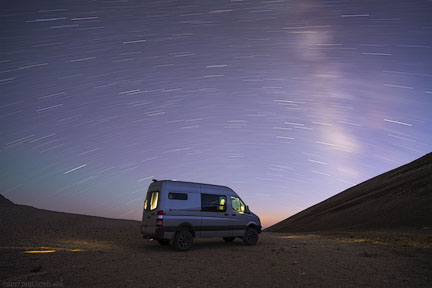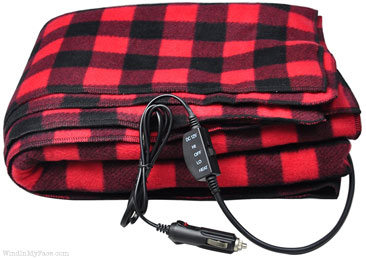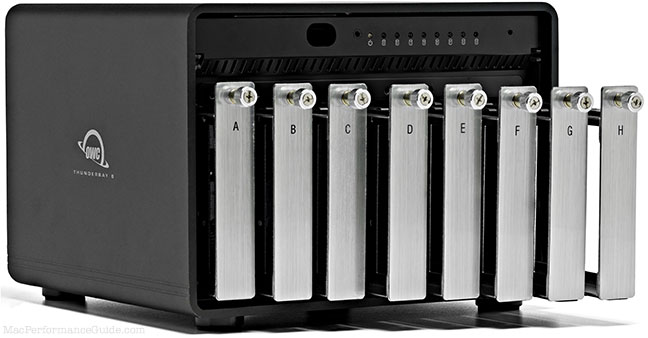
$220 SAVE $130 = 37.0% Western Digital 16.0TB Western Digital Ultrastar DC HC550 3.5-in… in Storage: Hard Drives
|

|

|

|

|
Mercedes Sprinter: Electric Heating Options
Photographer and cyclist and Mac expert and software engineer Lloyd Chambers is available for consulting on general Sprinter considerations at his usual consulting rates via phone, or in person in the Palo Alto, CA area. Save yourself hours and mistakes by discussing issues up-front. More about Lloyd....
Get your batteries and alternator and regulator (the whole kit!) from NationsStarterAlternator.com.

This page discussses electric heating options including high-wattage space heaters, low-wattage space heaters, and electric blanket.
Electric heating is highly attractive in that it avoids all of the risks of carbon monoxide poisoning, with the caveat that idling the engine for more heating and the 1500 or so watts it can deliver via the alternator should be monitored for CO—it is possible for tailpipe CO to enter the cabin, particularly in a vehicle that is not well sealed.
For my usage at high altitude (8000' to 11,600'), fuel-based heating is a non-starter using diesel or propane—neither works well (diminished heat output due to low oxygen), and both have serious carbon monoxide risks from the low oxygen levels. Propane heating is already weak at 10,200' in my testing, so it is completely useless at 11,600' where I often stay.
I’ve settled on electric heating. It is certainly not for most users (10 kW or so needed), but neither propane nor diesel can perform at high altitude (9000' to 11,600'), and there are no health risks with interior electric heating.
Overview of electric heating
Substantial electric heating is impractical without a capacious battery like the 400 amp / 5 kilowatt Lithionics battery in my Sprinter van. Even that 5 kW battery can run a space heater no more than 3 hours on high assuming 90% discharge. The saving grace is that the Sprinter 220 amp alternator at idle can provide about 1400 watts of power thus depleting the battery only very slowly—that statement based on direct experience, repeatedly.
Lead acid batteries are unlikely to be viable in two ways: (1) power including voltage drop versus weight, and (2) discharging to 80% requires only the very highest quality lead acid batteries.
A major incentive for electric heating is to avoid carbon monoxide poisoning, either low-level or the deadly variety. Even heating outside the vehicle (or the tailpipe) can leak CO into the van*. Not waking up dead is a very strong incentive, at least for me, with the catalytic propane heaters not safe at all, in spite of marketing claims. Moreover both diesel heaters and propane heaters either do not work at all, or offer greatly reduced heat output at the 8000' to 11,600' elevations I often camp at.
* A friend’s CO detector went bonkers when his water heater was on: CO was infiltrating the cabin from outside; the heater vents outside but the gas came in the bathroom window.
Nominal versus actual heat
An AC power electric heater consumes more power than its power rating, because battery power (DC) must be converted into AC power. That power usage should be calculated into the runtime and heating capacity. Unless of course shore power is in use (battery not used).
For example, assuming 86% efficiency, for the Xantrex Freedom XC to deliver 1440 watts of AC power to the Aerus Apollo 2000 space heater, it must draw (1440/.86) = 1674 watts of DC power. That DC-to-AC conversion overhead is turned into heat in the inverter, so that running a space heater at 1440 watts really means the cabin getting 1674 watts of heating: a steady 129 amps as reported by the Lithionics lithium battery status display when in actual use. However, the DC-AC conversion actually seems to run closer to 84% at times, so that raises things to around 1750 watts—more on that below.

Electric space heater — Aerus Apollo 2000
I don’t use this heater any more; I use a Honeywell mode now. This Aerus Apollo failed 2 of 3 units. While I got them cheap, I can’t afford taking a failure-prone heater with me.
The Aerus Apollo 2000 Infrared Space Heater @AMAZON is claimed to be an 1800 watt heater, but the Xantrex Freedom XC shows plainly that the heater is ~1440 watts on high and ~770 watts on low, so the actual power draw is lower than claimed—which in my view is ideal for van use—1800 watts presses a 2000 watt inverter to its limits and is more than I’d want most of time. 1440/770 is more practical than 1800/900 watts.
The 400 amp Lithionics battery could power a 1440 watt heater for about 2.5 hours by going to 90% discharge. That’s not very long, but for quick heating for an hour or less, flipping a switch to 1440/770 watts is awfully convenient. Tests at 70°F show that the Xantrex Freedom XC doesn’t even get warm due to excellent fan cooling.
I chose the Aerus Apollo 2000 Infrared Space Heater @AMAZON as an attractive and relatively compact unit with 800 and 1500 watt settings. Placed under the desk it can warm the local area very nicely within a few minutes.
Note that 1440 watts from the space heater is more like 1750 watts total due to DC-AC power losses (heat).
Eight-bay Thunderbolt 3 high-performance storage for photo and video.
Hard drives or SSDs.
Non-RAID or RAID-0/1/4/5/10.
Capacities up to 144 Terabytes!
BTU output with engine idling and space heater together
Caution advised: when idling the engine for significant time, a high quality carbon monoxide detector should be used.
Field testing proves that the Mercedes Sprinter alternator can output about 115 amps at 800 rpm idle with an appropriate load. This contradicts much of what one finds in discussion boards and shows why field testing is the only answer—not assumptions or nominal output figures.
This completely changes the equation for short term electric heating, making a few hours of electric heating viable without running down the battery much, that is, by idling the engine.
When the Sprinter engine is idled at about 800 rpm (not the high idle option), there is very little battery consumption even at 1440 watts, plus the cabin heater can contribute as much or more of heating. Sprinters with a high idle option should be able to generate even more power, presumably making it possible to run at 1.44 kW space heater and even charge the battery significantly.
1755 watts = about 6000 BTU
Sprinter cabin hot air guesstimate: 8000 BTU
= about 14000 BTU total = ample even down to 15°F outside
In my usage in the field with outside temperatures in the low 20s°F, idling the engine and running the space heater provided ample heat to keep the van warm and comfortable with only a very thin base layer of insulation. With the planned 4" of blue jean insulation, I’d have been roasting.
DC/AC efficiency
Below, the readouts from the Lithionics status panel and the Xantrex Freedom XC status panel. Figures vary a bit but not by more than 1 amp or 10 watts.
The Xantrex Freedom XC shows an erroneous input voltage reading: a multimeter on the DC input terminals of the Xantrex Freedom XC shows voltage within 0.05 volt of what the Lithionics status panel shows.
The figures below vary slightly; typical steady-state load is 1.44 kilowatts. Also, about 3 amps were being consumed by interior lighting. Subtracting out those amps:
12.7V X 135.2A = 1717 watts <==> 1450 watts implies a DC-AC conversion efficiency of 84.4%, which is below the rated efficiency range of 86% to 91%.

Electric Space heater — small units
Small 12V DC heaters are available; I have yet to find one to my liking but the about $7 Schumacher 1224 12V 235W/150W Ceramic Heater @AMAZON is worth a try. Good for keeping hands or feet warm or just a DC-sink to keep the battery warm overnight when it goes sub-freezing. At a setting of 235 watts, the Lithionics battery should run for 17+ hours down to 80% discharge. At 150 watts, leaving it on overnight for 8 hours would use only about 19% of the battery capacity. That’s no big deal and if it keeps the battery above freezing, it’s way better than letting the battery get down to 20°F or whatever.
The problem with the $7 used unit I purchased is that it would trip the short circuit protection on my Lithionics battery, yet nothing else does so. Presumably defective.

Electric blanket
Since I intend to sleep in my van down to 18°F and occassionally colder, why not an electric blanket @AMAZON? Such as the Sports Imports 12V Fleece Heated Electric Travel Blanket @AMAZON. While an AC power blanket can be used, that requires the inverter to be on, so a 12V DC blanket is attractive.
For that matter, an electric blanket can be placed over the battery itself, and use to keep it warm directly as well as indirectly (by internal warming as the battery delivers power). Keeping a lithium battery warm above 32°F so that it can charge and discharge efficiently. While my Lithionics battery has the protection circuitry to refuse to charge at below 32°F (doing so can destroy the battery), it is still better to not let the battery go sub-freezing, since it has a very large thermal mass and can take hours to warm up.

Seagate 22TB IronWolf Pro 7200 rpm SATA III 3.5" Internal NAS HDD (CMR)
SAVE $100




